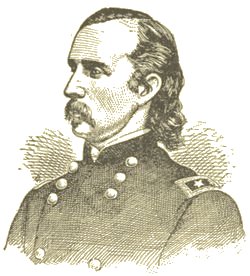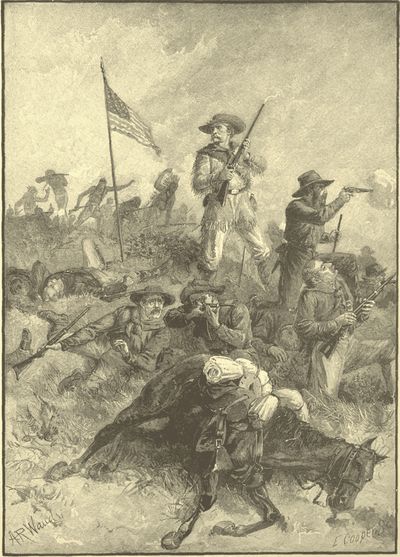 George Armstrong Custer, born on December 5, 1839, in New Rumley, Ohio, was a United States Army officer and cavalry commander known for his dramatic and controversial role in American history, particularly during the Indian Wars. Custer graduated from the United States Military Academy at West Point in 1861, ranking last in his class, yet he quickly distinguished himself as a fearless and aggressive cavalry leader during the American Civil War.
George Armstrong Custer, born on December 5, 1839, in New Rumley, Ohio, was a United States Army officer and cavalry commander known for his dramatic and controversial role in American history, particularly during the Indian Wars. Custer graduated from the United States Military Academy at West Point in 1861, ranking last in his class, yet he quickly distinguished himself as a fearless and aggressive cavalry leader during the American Civil War.
 Custer's rise to fame came with his bold actions in several key battles, including the Battle of Gettysburg, where his leadership helped turn the tide against Confederate forces. His success on the battlefield earned him rapid promotions, making him a brigadier general by the age of 23, one of the youngest in the Union Army.
Custer's rise to fame came with his bold actions in several key battles, including the Battle of Gettysburg, where his leadership helped turn the tide against Confederate forces. His success on the battlefield earned him rapid promotions, making him a brigadier general by the age of 23, one of the youngest in the Union Army.
After the Civil War, Custer's military career continued in the West during the Indian Wars, where he was tasked with enforcing U.S. policies against Native American tribes. His most infamous and final engagement was the Battle of Little Bighorn on June 25, 1876. Leading the 7th Cavalry Regiment, Custer attacked a coalition of Lakota, Northern Cheyenne, and Arapaho tribes led by Sitting Bull and Crazy Horse. Underestimating the strength and resolve of the Native American forces, Custer and his troops were overwhelmingly defeated, resulting in his death and the deaths of over 200 of his men in what became known as "Custer's Last Stand."
Custer's legacy is complex, marked by his bravery and tactical skill as well as his controversial role in the violent clashes between the U.S. military and Native American tribes. His dramatic life and death have made him a lasting symbol of the tumultuous era of American expansion and conflict.
|
 George Armstrong Custer, born on December 5, 1839, in New Rumley, Ohio, was a United States Army officer and cavalry commander known for his dramatic and controversial role in American history, particularly during the Indian Wars. Custer graduated from the United States Military Academy at West Point in 1861, ranking last in his class, yet he quickly distinguished himself as a fearless and aggressive cavalry leader during the American Civil War.
George Armstrong Custer, born on December 5, 1839, in New Rumley, Ohio, was a United States Army officer and cavalry commander known for his dramatic and controversial role in American history, particularly during the Indian Wars. Custer graduated from the United States Military Academy at West Point in 1861, ranking last in his class, yet he quickly distinguished himself as a fearless and aggressive cavalry leader during the American Civil War.
 Custer's rise to fame came with his bold actions in several key battles, including the Battle of Gettysburg, where his leadership helped turn the tide against Confederate forces. His success on the battlefield earned him rapid promotions, making him a brigadier general by the age of 23, one of the youngest in the Union Army.
Custer's rise to fame came with his bold actions in several key battles, including the Battle of Gettysburg, where his leadership helped turn the tide against Confederate forces. His success on the battlefield earned him rapid promotions, making him a brigadier general by the age of 23, one of the youngest in the Union Army.








